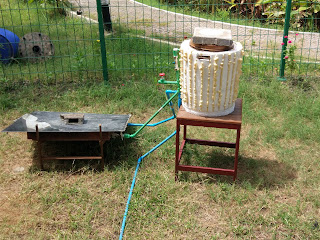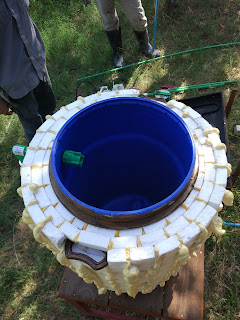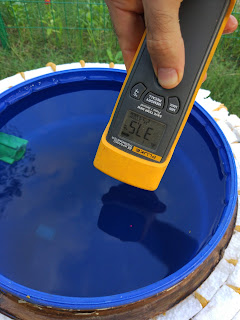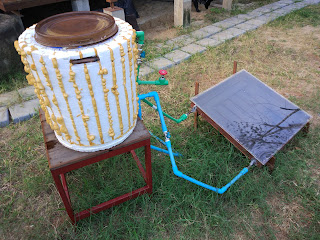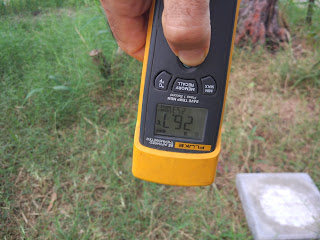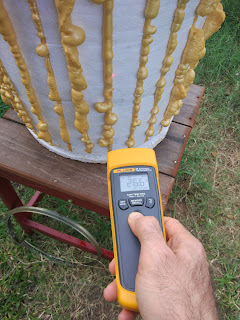I’ve been trying to put together this project for most of the year. We finally got to it about a month ago, but I was too busy over that period to blog it.
So here is a summary…
I was inspired by a few of the projects on the Internet for DIY solar water heaters. So we hired a welder we know that specializes in copper and asked him to weld together a collection of copper pipe, put it in a plywood box that was covered on the inside with aluminum foil and then spray painted black (to keep as much heat from the sun in the box as possible) and then covered in acrylic.
For this experiment we took a 40L plastic drum and covered it with about 10cm (4″) of foam for keeping the warm water warm overnight.
Here are some pictures after it was all hooked up for testing:
You can see that there are only 5 tubes running lengthwise in the solar heating box. This is just a proof of concept setup. For a real setup, we would probably want to pack as many lengthwise as we could fit. I think even in a small box like this one (less than 1m x 1m), we could probably get up to about 18 tubes in there.
We tried out only convective circulation between the tank and the heater:
And for the test setup, we ran a PVC pipe from the main water of the house out to the setup:
Here you can see the hot water inlet tube on the inside of the tank on the left side near the top:
And here is the temperature after heating it up for one day in the sun:
37.5C is actually plenty warm enough given that we only set the hot water temperature to about 34C when we use the hot water heater in the shower in BaanMae. (Actually, I find Thailand hot enough that I prefer cold water, but Praew likes warm water on occassion.)
After a cold (for Bangkok) night of rain, I went out at about 6AM before the sun rose over the neighbor’s house to see how much it cooled down.
The water inside dropped down to about 33C, but this isn’t too bad given that the ambient temperature outside was about 26C:
The foam was within 1C of ambient, so I don’t think much leaked through the foam:
Most of the heat probably leaked through the top, so we built a foam to cover the top.
But the main problem we discovered is in how we feed the cold water in and take the hot water out. We are currently pulling the hot water out through the same “return pipe” from the heater box and feeding new cold water in through the pipe out to the heater box from the bottom of the tank. This made sense in my imagination, but what seems to be happening on a cold morning is that when we turn on the tap to pull hot water out of our test setup, the cold water flows into the pipe and then through the heater box and out through the tap on the “hot” side of the heater box. As a result, the outlet tap gets the cold water directly from the main, and not from the nice hot water in the tank.
So I’ll need to reconsider the connections before this can be deployed.


